As a devoted music enthusiast, delving into album credits has always been a captivating pursuit. It’s a method for tracing connections between beloved artists, albums, and songs. The allure of a perfectly executed piano accompaniment or a distinctive drum track often leads to a meticulous examination of liner notes, seeking the identity of the talented musician behind the sound. In a bygone era when record stores served as hubs for impromptu gatherings of music aficionados, sharing this knowledge and deciphering album covers for further musical clues was a cherished pastime. Regrettably, many albums, particularly those employing hired studio professionals, omitted these valuable credits. However, during the 1970s, two exceptional artists stood out, meticulously listing every musician who graced their records: Steely Dan and Joni Mitchell. Scrutinizing the album sleeves, one name repeatedly surfaced, sparking curiosity about the guitarist responsible for the magnificent riffs and solos: Larry Carlton. This article pays homage to Larry Carlton’s remarkable contributions to their 1970s albums, exploring his distinctive “Mitchell Guitar” sound that became integral to their iconic music.
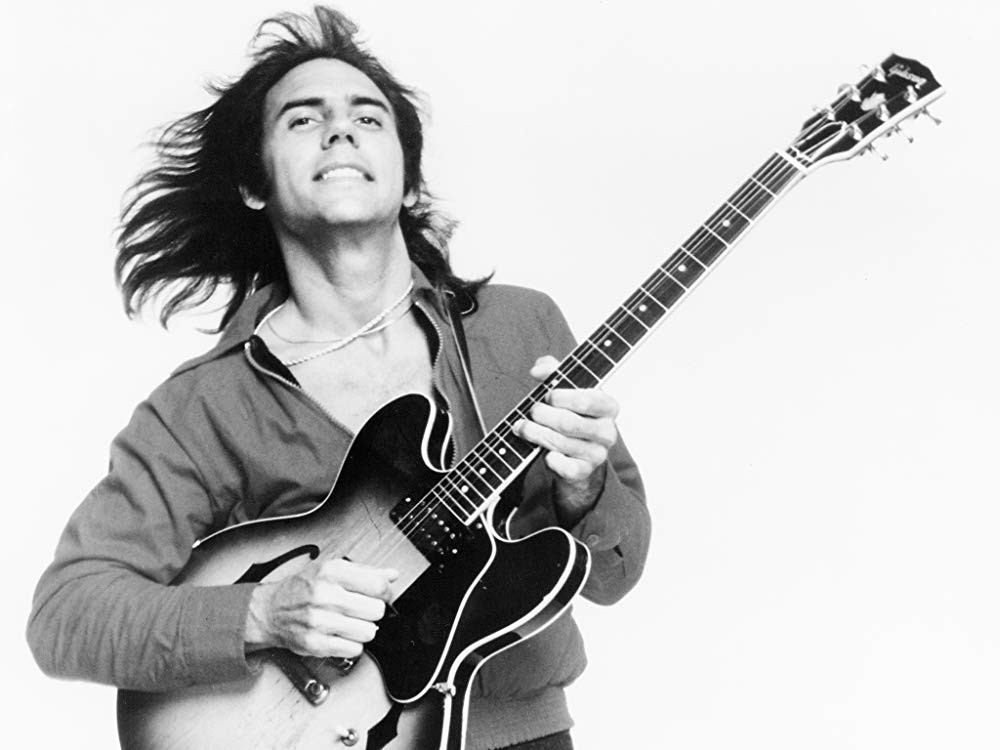 Larry Carlton 1984
Larry Carlton 1984
Carlton’s initial collaboration with Steely Dan occurred on their 1975 album, Katy Lied. By this juncture, Steely Dan had evolved into a studio-centric project, enlisting top-tier session musicians from Los Angeles and New York. Carlton’s contribution was initially limited to a single track, “Daddy Don’t Live in that New York City No More.” While a solid performance, it merely hinted at the significant impact he would have on their subsequent album, The Royal Scam. For this record, Steely Dan invited four session guitarists, with Carlton featuring prominently across numerous songs.
“Don’t Take Me Alive,” a track with lyrics reminiscent of the Al Pacino film Dog Day Afternoon, showcases some of Carlton’s most compelling work on the album. His signature melodic solos and exceptional guitar tone are vividly displayed. Reflecting on the song’s dramatic opening chord, Carlton recounts, “There was no chord in front of the beginning of the song, nothing. Just ‘wham’. I don’t know what else we tried, but Donald was the one who finally just said, ‘Why don’t we just put a big chord in front of it?’ It was that simple. I went out into the room where my amp was and stood in front of it and tweaked until there was the right tone and then I did four or five or six of those chords to where everything rang. They adjusted the limiter and everything so it really sat like they wanted it to. But Donald was right.” This anecdote reveals the spontaneous creativity and collaborative spirit that defined these sessions, contributing to the unique “Mitchell guitar” aesthetic that Steely Dan sought.
 Larry Carlton
Larry Carlton
Carlton’s zenith on The Royal Scam, and arguably his most celebrated solo within Steely Dan’s repertoire, graces the album’s opening track, “Kid Charlemagne.” This song, chronicling the rise and fall of a drug dealer, possibly inspired by Owsley Stanley III, the infamous underground chemist of 1960s San Francisco, served as the perfect introduction to Steely Dan’s darkest album. Carlton’s presence is pervasive throughout the track, highlighted by a 50-second solo, commencing at 2:18, marked by intricate twists and turns. His melodic inventiveness persists through the outro, adding tasteful licks as the song fades. Donald Fagen lauded Carlton’s virtuosity: “He’s a real virtuoso. In my opinion he can get around his instrument better than any studio guitarist. He’s also quite a good blues player. He did the solos on ‘Kid Charlemagne.’ The middle solo he did in two takes and we used parts of both. The last solo was straight improvisation.” This solo exemplifies the “Mitchell guitar” approach – technically brilliant yet deeply melodic and emotionally resonant.
Amidst an album brimming with exceptional guitar work from talents like Denny Dias, Dean Parks, and Elliott Randall, Larry Carlton’s contributions on The Royal Scam stand out as paramount. Walter Becker emphasized, “If that is the definitive Steely Dan guitar album, then Larry Carlton is the reason why. He contributed quite a bit to the tunes. There would be lot of volatile people with volatile music styles in the room and, in a lot of cases, it seemed to me that Larry, more than anybody else, was holding things together rhythmically and in other ways.” Carlton himself recalled the sessions for “Kid Charlemagne”: “Once we found a tone that we all agreed on, Donald Fagen and Walter Becker would say, ‘Yes, that’s cool,’ then really it was just a case of, ‘You want to try one?’ And they would hit the red button and it’d maybe be, ‘How you doing?’ and I’d say, ‘Yes, let’s try it again.’ Then all of a sudden some magic starts happening. Very patient, there were no suggestions of licks or anything like that. I did two hours’ worth of solos that we didn’t keep. Then I played the first half of the intro, which they loved, so they kept that. I punched in for the second half, so it was done in two parts and the solo that fades out in the end was done in one pass.” This meticulous yet organic process allowed Carlton’s “Mitchell guitar” style to truly shine, shaping the album’s sonic landscape.
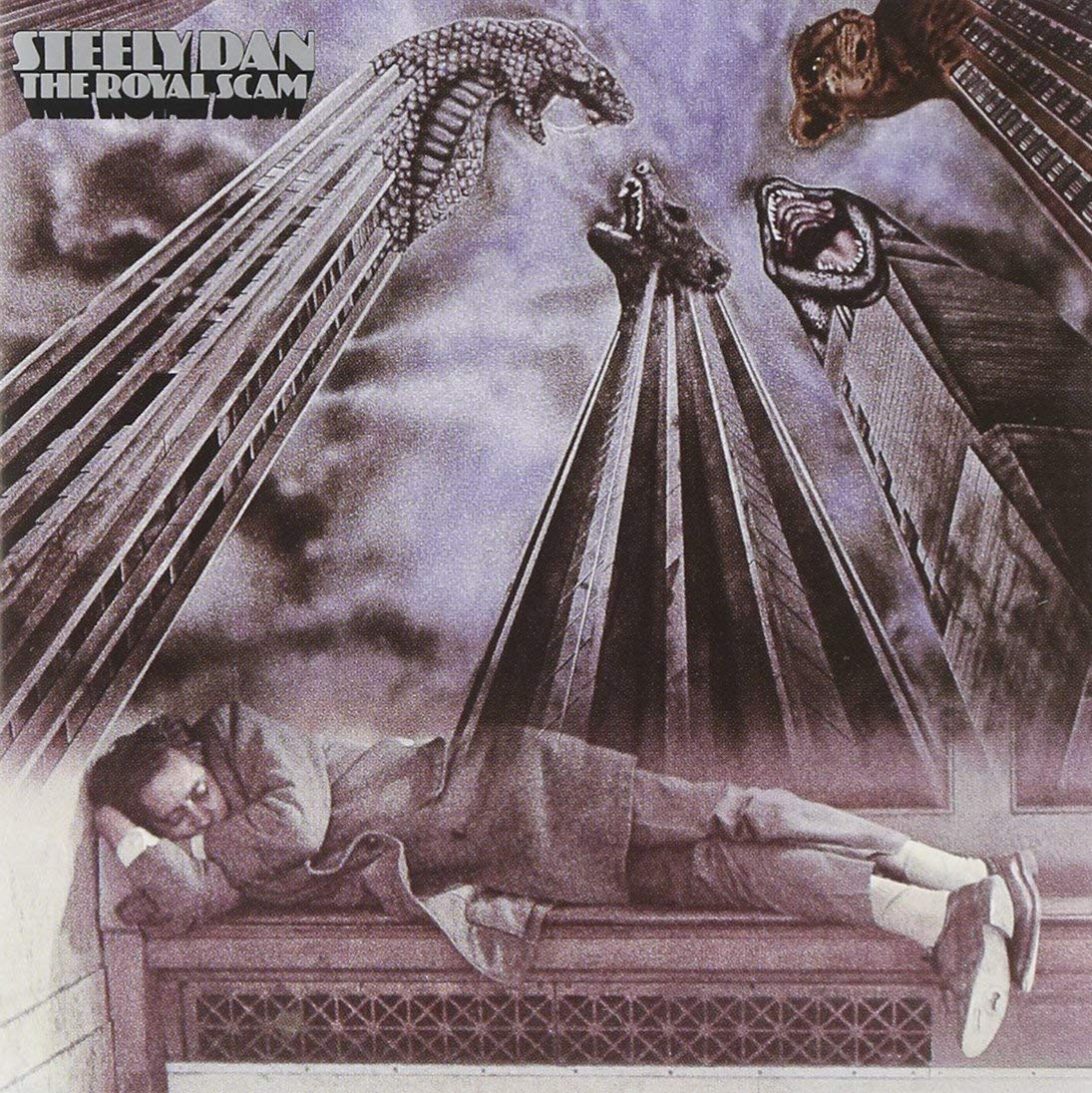 The Royal Scam
The Royal Scam
Larry Carlton’s celebrated guitar tone, a key element of the “Mitchell guitar” sound, warrants closer examination. His amp choice was pivotal. Recalling the sessions, he stated, “I can’t remember why but I decided to take my little Tweed Deluxe with my 335 and that became my lead sound with Steely Dan.” Recognized by Guitar Player magazine as one of the top 50 guitar tones of all time, Carlton elaborated on his technique: “I have the claw thing happening down there on the strings when I play. It lets me know where I’m at, but I’d have better technique if I held my hand free of the strings. I pick hard. In fact, I overplay the instrument. I’ve been squeezing a pick since I was six, and the pressure has curved by index finger. At this point, my hands have molded themselves to fit the guitar.” Regarding the Tweed Deluxe, he added, “That’s the amp that I used for the Steely Dan sessions and I don’t even remember why and how I’d brought the Tweed in, because I didn’t use it on any other sessions, only the Royal Scam, Aja, and Donald’s Nightfly album.” This amp choice, combined with his unique technique, was fundamental in crafting the “Mitchell guitar” sound that defined his Steely Dan contributions.
Another crucial component of his gear was the volume pedal, which he began utilizing during his tenure with The Crusaders in the early 1970s. “In 1971 I got my first volume pedal and I used it on the first Crusaders album, and that became an identifiable Larry Carlton sound, so that was a way to play where I wasn’t just chucking rhythm or playing licks. In the right hands, that can really enhance a track without it being so typical guitar.” Listening to his guitar work on The Crusaders’ rendition of Carole King’s “So Far Away” vividly illustrates this technique. This volume pedal mastery further contributed to the nuanced and expressive “Mitchell guitar” sound.
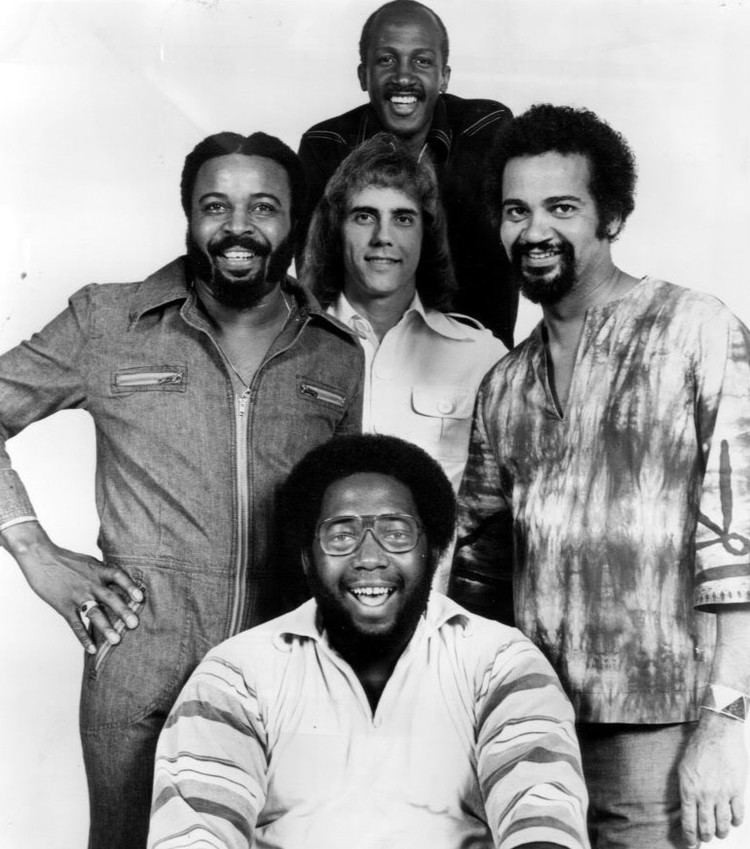 Larry Carlton The Crusaders
Larry Carlton The Crusaders
And of course, the guitar itself – the iconic Gibson ES-335. Gibson now produces a signature model in his name, a testament to its significance. Carlton relied heavily on this guitar throughout his session career, considering it a cornerstone of his “Mitchell guitar” style. Describing its versatility, he explained, “When I first started doing session work in late 1969, I never knew what sort of music I was going to have to play on the next session, so I had to take many different kinds of guitars – a Fender Telecaster, a Stratocaster, a jazz guitar of some kind, an acoustic guitar, and usually a Les Paul – and I wished for and found a guitar which could cover many of those sounds so I didn’t have to always carry so many guitars. For me, the 335 is a guitar I can play country music on, pop music, I could play the blues, straight ahead jazz, so it seems that that guitar is as versatile as my playing could be – a really good find.” His discovery of this particular ES-335 was serendipitous: “The little store I went to in 1969 to buy a 335 had three 335s hanging on the wall, and I chose this one out of it because it sounded the best to me, and the rest is history.” This ES-335 became synonymous with the “Mitchell guitar” sound, particularly in his session work.
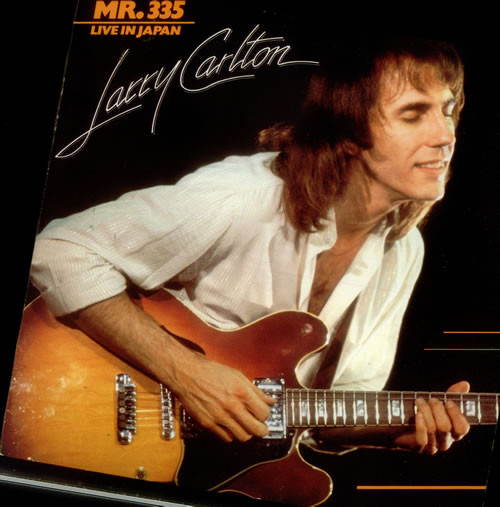 LARRY_CARLTON_MR.+335+LIVE+IN+JAPAN
LARRY_CARLTON_MR.+335+LIVE+IN+JAPAN
Larry Carlton played a pivotal role in Steely Dan’s magnum opus, 1977’s Aja. Celebrated for its intricate arrangements and impeccable production, Aja is arguably less guitar-centric than its predecessor, yet Carlton’s contribution remains essential. In the Classic Albums documentary dedicated to Aja, Carlton elucidates his multifaceted role, extending beyond mere guitar playing: “I think of myself as the person they had wanted to be the liaison between themselves and the studio musicians. They would give me their demo tape and they had those wonderful piano parts on it and many of the bass parts were there also. And I would be the person that would take those notes off of the tape, fill in the blanks when they were not sure what they wanted to be played, and then I would take that chart to the session and I would be the person who was familiar with the song out in the studio with the studio musicians. So if Donald or Walter would say: ‘Larry, when we go to the bridge with such and such’ I would be able to tell the musicians: ‘bar 19, B flat 7 with a flat 9…’. ” This “Mitchell guitar” sound was not just about playing, but also about facilitating the creative process.
Aja spawned several hit singles, including “Peg” (though Carlton didn’t play on this track), “Josie,” and “Deacon Blues.” Walter Becker wryly described the protagonist of “Deacon Blues”: “The protagonist is not a musician. He just sort of imagines that that would be one of the mythic forms of loserdom to which he might aspire, and who’s to say he’s not right?”. However, Carlton’s most impactful contributions, in my view, are found on the epic title track, “Aja, for which I dedicated full article,” and “Home At Last,” where he collaborates with Bernard Purdie, Chuck Raney, and Victor Feldman. Aja stands as a unique album, achieving both mainstream success and artistic brilliance. Carlton reflects on this duality: “Donald and Walter loved sophisticated harmonies but they are rock n roll guys. We are contemporaries as far as age so we were all brought up listening to the 60s. I know that they love rock n roll but they also have a passion for harmony which as do I. All the players they used, we love great feeling rock n roll music but we love harmony.“ This blend of sophistication and rock sensibility is a hallmark of the “Mitchell guitar” sound within Steely Dan’s context.
Steely Dan’s final album of this era, Gaucho, recorded after their relocation back to New York, did not initially include Carlton. These sessions primarily featured New York-based studio musicians. The album yielded the hit “Hey Nineteen,” a showcase for another guitar great, Hugh McCracken. However, for many, the standout track on Gaucho is “Third World Man,” one of Steely Dan’s slowest compositions, and arguably featuring Larry Carlton’s finest solo for the band, embodying the quintessential “Mitchell guitar” expressiveness.
How did Carlton’s solo end up on Gaucho if he wasn’t part of the New York sessions? The song’s origins trace back several years to The Royal Scam era, initially titled “Were You Blind That Day” with different lyrics. In 2011, Carlton recounted, “When Billboard Magazine came out … about Gaucho, it’s writing about the news ‘Steely Dan released … bla bla bla … and great guitar solo by Larry Carlton’, and I said, ‘but I didn’t play on Gaucho!, they’d cut it in New York, I didn’t play on it!’. So I found out later: they had finished mixing in New York, and one of the second engineers erased one of their master tracks. So ‘Third World Man’ was in the can from The Royal Scam and they had to reach back into the old tapes and find something to finish the album, and that’s how I ended up on Gaucho playing Third World Man”. This serendipitous inclusion resulted in a solo that, while distinct from his Royal Scam work, perfectly complements the song’s mood, showcasing the adaptability of the “Mitchell guitar” approach.
 Guitar Player May 1979
Guitar Player May 1979
Jon Herington, Steely Dan’s lead guitarist on tours since 1999, offered his expert opinion on his favorite Steely Dan guitar solo. Without hesitation, he declared, “Hands down, my favorite solo on any Steely Dan record is Larry Carlton’s Third World Man. Donald and Walter must have thought that was a great take, because originally, it wasn’t even on the song. It was done in an earlier recording session. And I think the only reason they kept it and tried to write a new lyric later that became Third World Man was because they loved that solo so much. I love that solo too. It’s one of the greatest pop guitar solos ever recorded. It’s so melodic, and the sound is fantastic. It has a great shape, the whole way it moves and climaxes.” Herington’s praise underscores the enduring impact and melodic genius of Carlton’s “Mitchell guitar” style.
Summarizing Larry Carlton’s contributions to Steely Dan, Walter Becker stated, “With Larry, every pass he made was something good. His disposition was so even that it always seemed fairly easy, even if it took a while to get what you finally wanted. It was mostly just a question of stating clearly what the idea was that you had in mind. If we had something in mind that was even remotely appropriate for Larry, he could do it well. It was never like pulling teeth with Larry, as it had been with many other players.” This testament highlights Carlton’s professionalism and consistent delivery of the “Mitchell guitar” sound that Steely Dan valued.
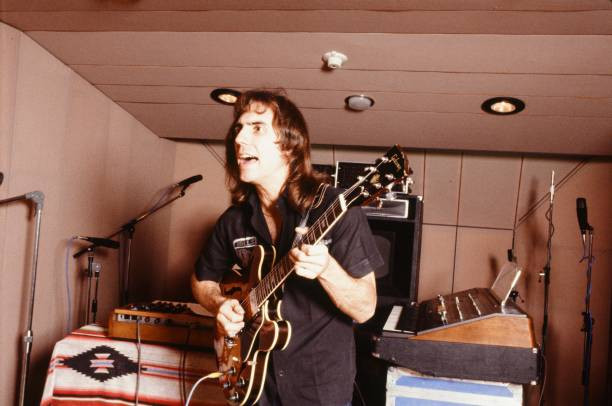 Larry Carlton2
Larry Carlton2
Beyond Steely Dan, Joni Mitchell also benefited significantly from Larry Carlton’s “Mitchell guitar” artistry throughout the 1970s. Mitchell’s embrace of jazz in the latter part of the decade aligned perfectly with Carlton’s style, seamlessly blending rock and jazz sensibilities. Their musical partnership began when Mitchell enlisted Tom Scott’s LA Express as her backing band. Carlton, a founding member of the LA Express in 1973, participated in the recording of Mitchell’s Court and Spark that same year, marking her initial foray into jazz-infused music. A prime example of his work on this album is the hit single “Help Me,” Mitchell’s most successful song on the US charts, reaching #7 on the Billboard Hot 100 and her sole top 10 hit.
Carlton described his approach to Joni Mitchell’s music and the “Mitchell guitar” sound in this context: “You have to be able to improvise arrangements on the spot to be a great accompanist. It’s what you do with the phrases around the vocal that can make the whole thing sound more connected. I think there’s a very good example of how to think like an arranger. When Joni sings, ‘Help me, I think I’m falling,’ I do a rake across the strings, and it makes her next phrase – ‘in love again’ – really cool because she has a chord to sit down on.” This anecdote reveals his intuitive and arrangement-focused playing, a key component of the “Mitchell guitar” sound when accompanying vocalists like Joni Mitchell.
 Larry Carlton acoustic
Larry Carlton acoustic
Carlton departed the LA Express after Court and Spark, replaced by Robben Ford. The band continued touring with Joni Mitchell in 1974, resulting in the live album Miles of Aisles, but without Carlton. However, in 1975, when Mitchell returned to the studio for The Hissing of Summer Lawns, she invited Carlton back to contribute to several tracks, including the exquisite “Edith and the Kingpin.” Mitchell described the song’s inspiration: “Part of it is from a Vancouver pimp I met and part of it is Edith Piaf. It’s a hybrid, but all together it makes a whole truth.” Carlton’s “Mitchell guitar” style added depth and nuance to Mitchell’s storytelling.
Carlton also features on “Shades of Scarlet Conquering,” Mitchell’s song evoking a Southern belle with imagery from Gone with the Wind and Scarlett O’Hara. The significance of his contributions to Mitchell’s music is evident in his work on this track. He recorded two distinct guitar parts, and Mitchell, unable to choose between them, incorporated one into the final track and transcribed the other into the orchestral arrangement. This innovative approach highlights the integral role of the “Mitchell guitar” sound in shaping Mitchell’s artistic vision.
Joni Mitchell’s Hejira, released after The Hissing of Summer Lawns, is considered by many to be a masterpiece and one of her all-time best albums. Many of the songs were conceived during a cross-country road trip. The travelogue-like lyrics, primarily composed on guitar, demanded sparse arrangements, often featuring only two or three musicians alongside Mitchell. Mitchell assumed the role of rhythm guitarist, while Larry Carlton played lead electric guitar on four tracks and acoustic guitar on another, further defining the “Mitchell guitar” sound in a different context. Carlton described the recording process for Hejira: “The sessions were done one person at a time. When I came in to play all I had to listen to was Joni’s acoustic guitar and her vocal, and she just had me go out into the studio and react to the music. She gave me no direction, there was no time ahead of time to learn the songs – that’s never the way we’ve done our sessions – we come in fresh and we react to the tunes on the spot. On that record Joni had me play three, four, maybe five takes of reaction guitar, and then that would be the end of it. I would leave and she would later choose and pick which of my reactions she really wanted and agreed with on that song, and I think she did a great job of editing my parts, they fit like a glove on her tunes.” This improvisational and reactive approach was central to capturing the essence of the “Mitchell guitar” sound on Hejira.
“Amelia” stands out as a lyrical and musical highlight of Hejira. Mitchell explained the song’s inspiration: “In this song, I was thinking of Amelia Earhart and addressing it from one solo pilot to another, sort of reflecting on the cost of being a woman and having something you must do.” Carlton’s guitar work on “Amelia” is particularly evocative, eschewing conventional licks in favor of sustained, slide guitar-like notes, creating a soundscape that perfectly complements Mitchell’s voice and rhythm guitar. This minimalist yet powerful approach is another facet of the “Mitchell guitar” sound.
Carlton continues this technique on “Black Crow,” a more energetic track featuring masterful interplay between Mitchell, Jaco Pastorius, and Carlton. The synergy between their instruments is remarkable. While many rock musicians found Mitchell’s unconventional guitar tunings challenging, Carlton embraced them: “For her to use those tunings… was like playing with a jazz player who’s using different voicings. I still hear what the chord is – even though it sounds unique and beautiful the way she tuned her guitar. But, no, it was not a special challenge.” This adaptability and musicality are key to understanding the “Mitchell guitar” sound and Carlton’s success in various musical contexts.
Perhaps the most compelling testament to Larry Carlton’s playing and the “Mitchell guitar” sound comes from a story related to Joni Mitchell’s 1979 US tour and the subsequent live album Shadows and Light. Mitchell enlisted Pat Metheny, already a rising star in jazz guitar, for the tour. Tasked with reimagining guitar parts originally played by Larry Carlton, Metheny initially attempted to create original parts. However, he found himself drawn back to Carlton’s original contributions, stating that Carlton’s parts were not merely accompaniment but had become integral to the songs themselves, defining their essence. “Edith and the Kingpin” was one such example. While Metheny showcased his own brilliance with a solo feature on the tour and album, a poignant improvisation at the conclusion of “Amelia,” the anecdote underscores the indelible mark of the “Mitchell guitar” on Joni Mitchell’s music.
Larry Carlton encapsulates his own approach and the essence of the “Mitchell guitar” sound: “I think solos on a vocal record have to be very melodic. The music I listened to and liked during my formative years was very melodic. So when I play the guitar, I hear melodies.” This melodic sensibility, combined with his technical mastery and adaptability, defines the enduring appeal of Larry Carlton’s “Mitchell guitar” sound, forever intertwined with the iconic music of Steely Dan and Joni Mitchell.
 Larry Carlton
Larry Carlton
If you enjoyed reading this article, you may also like these:
Aja, by Steely Dan
Coyote, by Joni Mitchell

